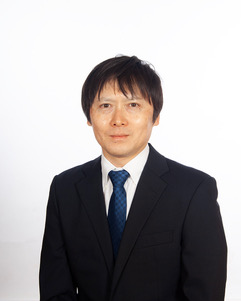Professor: OCHI, Haruki, Ph.D.
Research Interest
1) Research on Genomic Systems Enabling Tissue Regeneration
2) Research on the Evolution of Gene Expression Regulatory Mechanisms
Recent advancements in genome analysis technologies have revealed that genes governing development and regeneration are remarkably conserved across vertebrates from an evolutionary perspective. Focusing on regenerative capacity, species with high regenerative abilities, such as fish and amphibians, have been shown to reutilize developmental genes during regeneration. In contrast, despite possessing the same developmental regulatory genes, mammals exhibit limited regenerative capacity. This striking contrast suggests that the key to the diversity of regenerative capabilities in vertebrates lies in functional differences within non-coding DNA regions rather than in coding genes themselves.
Non-coding DNA regions include regulatory sequences such as enhancers and silencers, which precisely control gene expression through epigenetic modifications and three-dimensional genome architecture mechanisms. Remarkably, less than 2% of the 3.2 billion base pairs in the human genome encode proteins, while the remaining 98% (approximately 3.15 billion base pairs) constitute non-coding DNA regions. These non-coding regions also dominate the genomes of other vertebrates and are believed to harbor numerous yet uncharacterized functions that remain enigmatic.
Our research group is tackling fundamental questions: how complex tissues and organs are formed from a fertilized egg and how developmental genes are reactivated during tissue regeneration after injury. We focus particularly on the roles of non-coding DNA regions in development and regeneration, striving to elucidate their functions and uncover the profound mysteries of biological phenomena. This research holds the potential to provide groundbreaking insights not only in regenerative medicine and evolutionary biology but also in the broader field of life sciences, offering transformative perspectives and opportunities.
Research Focus
1) Research on Genomic Systems Enabling Tissue Regeneration
- Chromatin regulatory mechanisms promoting the reactivation of developmental control genes (e.g., studies on histone modifications and open chromatin analysis)
- Regulatory mechanisms of nuclear higher-order structures supporting regeneration (e.g., analyses of topological domains and nuclear architectural components)
- Functional analysis of isoforms involved in regeneration (e.g., studies using long-read RNA sequencing)
2) Evolution of Gene Regulatory Mechanisms
- Evolution of gene expression regulatory systems underlying species-specific differences in regenerative capacity
- Evolutionary mechanisms of enhancers and silencers
Recent Publication
- Kawasumi-Kita A, Ohtsuka D, Lee S. W., Kitajima K, Sakane Y, Tamura K, Ochi H, Suzuki KI, Niimi K, Asakura Y, *Morishita Y. (2024)
Hoxc12/c13 as key regulators for rebooting the developmental program in Xenopus limb regeneration.
Nature Communications15(1):3340. - Durant-Vesga J., Suzuki N, Ochi H, Bouffant RL, Eschstruth A, Ogino H, Umbhauer M, *Riou J. (2023)
Retinoic acid control of pax8 during renal specification of Xenopus pronephros involves hox and meis3
Developmental Biology, 493:17-28.. - Suzuki N, Kanai A, Suzuki Y, Ogino H, *Ochi H (2022)
Adrenergic receptor signaling induced by Klf15, a regulator of regeneration enhancer, promotes kidney reconstruction.
Proc. Natl. Acad. Sci. U.S.A 119(33):e2204338119. - Suzuki N, *Ochi H. (2020)
Regeneration enhancers: A clue to reactivation of developmental genes.
Development, Growth & Differentiation,62(5):343-354, Invited review. - Suzuki M, Igawa T, Suzuki N, Ogino H, *Ochi H. (2020)
Spontaneous neoplasia in the western clawed frog Xenopus tropicalis
micropublication Biology 10. - Suzuki N, Hirano K, Ogino H, *Ochi H. (2019)
Arid3a regulates nephric tubule regeneration via evolutionarily conserved regeneration signal-response enhancers.
eLife pii: e43186 - Rosenburg Cordeiro I, Kabashima K, Ochi H, Munakata K, Nishimori X, Laslo M, Hanken J, *Tanaka T(2019)
Environmental oxygen levels promoted the appearance of interdigital cell death during tetrapod evolution.
Developmental Cell50(2):155-166. - Session AM, et. al.(2016)
Genome evolution in the allotetraploid frog Xenopus laevis.
Nature5538(7625):336-343. - Suzuki N, Hirano K, Ogino H, *Ochi H. (2015)
Identification of distal enhancers for Six2 expression in pronephros.
International Journal of Developmental Biology59(4-6):241-6.v - Ochi H, Tamai T, Nagano H, Kawaguchi A, Sudou N, *Ogino H. (2012)
Evolution of a tissue-specific silencer underlies divergence in the expression of Pax2 and Pax8.
Nature Communications3:848.
Contact
Office: Building C, room 401&410
Tel&Fax: +81-78-803-5783
E-mail: harukiochi@harbor.kobe-u.ac.jp
Website: In preparation
 JAPANESE
JAPANESE 